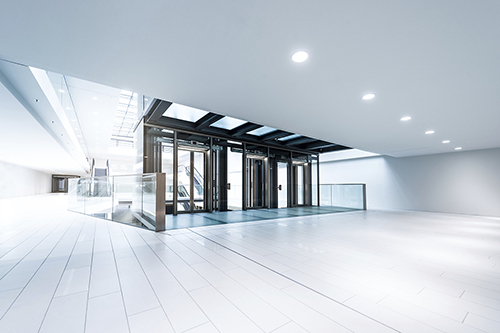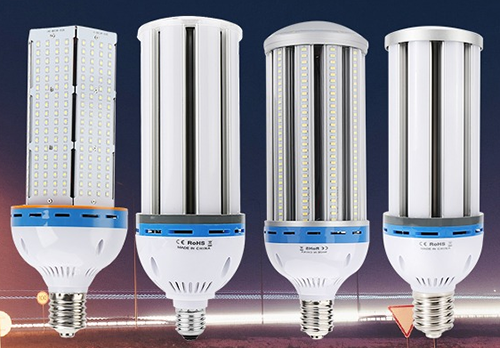When we talk about mental health and happiness, poor lighting is often overlooked, and more often we focus on creating a happier, healthier workplace. However, poor lighting can have a number of negative effects on physical and mental health, such as eye fatigue, headaches, and anxiety. We spend most of our time in artificial lighting environments, and there is evidence that lack of natural light can adversely affect the body and mind and can lead to diseases such as seasonal affective disorder (SAD).

When we spend the darkest days of the year, 40% of office workers struggle to work under the bad lights every day. According to a recent study on the impact of workplace lighting, this has a negative impact on their productivity and well-being. A recent study reported that an online survey of 7,000 office workers was conducted in October 2018. The study sample was from office workers in 10 European countries, including: UK (2000 people, 302 in London), Germany (1000), France (500), Netherlands (500), Sweden (500), Norway (500 people), Spain (500 people), Italy (500 people), Portugal (500 people) and Finland (500 people).
80% of office workers say that good lighting is important to them in the workplace;
40% of people face uncomfortable lighting every day;
32% said that better lighting makes them happier at work.
However, when winter access to natural light is limited, many people feel stressed and even have the seasonal affective disorder (SAD), and often stay at their desks for long periods of time, which is sometimes the only daylighting opportunity in their day. The survey also showed that 25% of respondents were frustrated by the lack of light in the workplace.
In fact, usually, only 13-15 minutes of natural light is enough to trigger the release of endorphins or "happy hormones." Many scholars have concluded through long-term research that SAD affects 5% to 10% of the population, which accounts for a large proportion of clinical depression patients in a quarter of each year.
Another study concluded that there is a close relationship between workplace lighting and sleep, activity, and quality of life of office workers.
There is no clear standard in the UK for lighting levels in the workplace. However, there are also regulations that indicate that the lighting at the site should be “appropriate and adequate” and that natural light should be used in the workplace. The emphasis on natural daylighting and other related research reflects a consensus that daylight is the best form of lighting.
However, in parts of the northern hemisphere, daylight itself does not provide sufficient illumination for the entire work area. This means that “appropriate and sufficient” lighting often requires a combination of natural and artificial lighting, in particular, the need to provide individualized artificial lighting according to activities, functions and personal needs, as well as artificial lighting that mimics natural light.
Personalized lighting options help create a more inclusive work environment. One such method is to adjust the light intensity and illumination during the day based on the natural daylight level outdoors and the individual needs of the user. In this way, employees feel that they are more able to control their work environment, which has also been proven to improve their happiness and productivity in the workplace.
There is now ample evidence that lighting that mimics natural light can greatly improve the health and well-being of people in the workplace, such as providing more natural light through large windows to provide proper illumination, as well as providing biodynamics and Personalized lighting for task adjustment is achieved.
For areas where natural light is not available, choosing a suitable light is especially important. From this point of view, Xinjia designed LED lights of different power sizes. Customers can choose according to their own needs, not only can add enough light, but also save energy and save money. It is the best choice for your office and home.

You may be interested in the following articles:
《How To Choose A High Quality LED Corn Lights》
《Xinjia Teaches You How To Choose The Home Lighting!》
《What The Effects of Different Light Sources On Human Health?》

When we spend the darkest days of the year, 40% of office workers struggle to work under the bad lights every day. According to a recent study on the impact of workplace lighting, this has a negative impact on their productivity and well-being. A recent study reported that an online survey of 7,000 office workers was conducted in October 2018. The study sample was from office workers in 10 European countries, including: UK (2000 people, 302 in London), Germany (1000), France (500), Netherlands (500), Sweden (500), Norway (500 people), Spain (500 people), Italy (500 people), Portugal (500 people) and Finland (500 people).
80% of office workers say that good lighting is important to them in the workplace;
40% of people face uncomfortable lighting every day;
32% said that better lighting makes them happier at work.
However, when winter access to natural light is limited, many people feel stressed and even have the seasonal affective disorder (SAD), and often stay at their desks for long periods of time, which is sometimes the only daylighting opportunity in their day. The survey also showed that 25% of respondents were frustrated by the lack of light in the workplace.
In fact, usually, only 13-15 minutes of natural light is enough to trigger the release of endorphins or "happy hormones." Many scholars have concluded through long-term research that SAD affects 5% to 10% of the population, which accounts for a large proportion of clinical depression patients in a quarter of each year.
Another study concluded that there is a close relationship between workplace lighting and sleep, activity, and quality of life of office workers.
There is no clear standard in the UK for lighting levels in the workplace. However, there are also regulations that indicate that the lighting at the site should be “appropriate and adequate” and that natural light should be used in the workplace. The emphasis on natural daylighting and other related research reflects a consensus that daylight is the best form of lighting.
However, in parts of the northern hemisphere, daylight itself does not provide sufficient illumination for the entire work area. This means that “appropriate and sufficient” lighting often requires a combination of natural and artificial lighting, in particular, the need to provide individualized artificial lighting according to activities, functions and personal needs, as well as artificial lighting that mimics natural light.
Personalized lighting options help create a more inclusive work environment. One such method is to adjust the light intensity and illumination during the day based on the natural daylight level outdoors and the individual needs of the user. In this way, employees feel that they are more able to control their work environment, which has also been proven to improve their happiness and productivity in the workplace.
There is now ample evidence that lighting that mimics natural light can greatly improve the health and well-being of people in the workplace, such as providing more natural light through large windows to provide proper illumination, as well as providing biodynamics and Personalized lighting for task adjustment is achieved.
For areas where natural light is not available, choosing a suitable light is especially important. From this point of view, Xinjia designed LED lights of different power sizes. Customers can choose according to their own needs, not only can add enough light, but also save energy and save money. It is the best choice for your office and home.

You may be interested in the following articles:
《How To Choose A High Quality LED Corn Lights》
《Xinjia Teaches You How To Choose The Home Lighting!》
《What The Effects of Different Light Sources On Human Health?》
没有评论:
发表评论